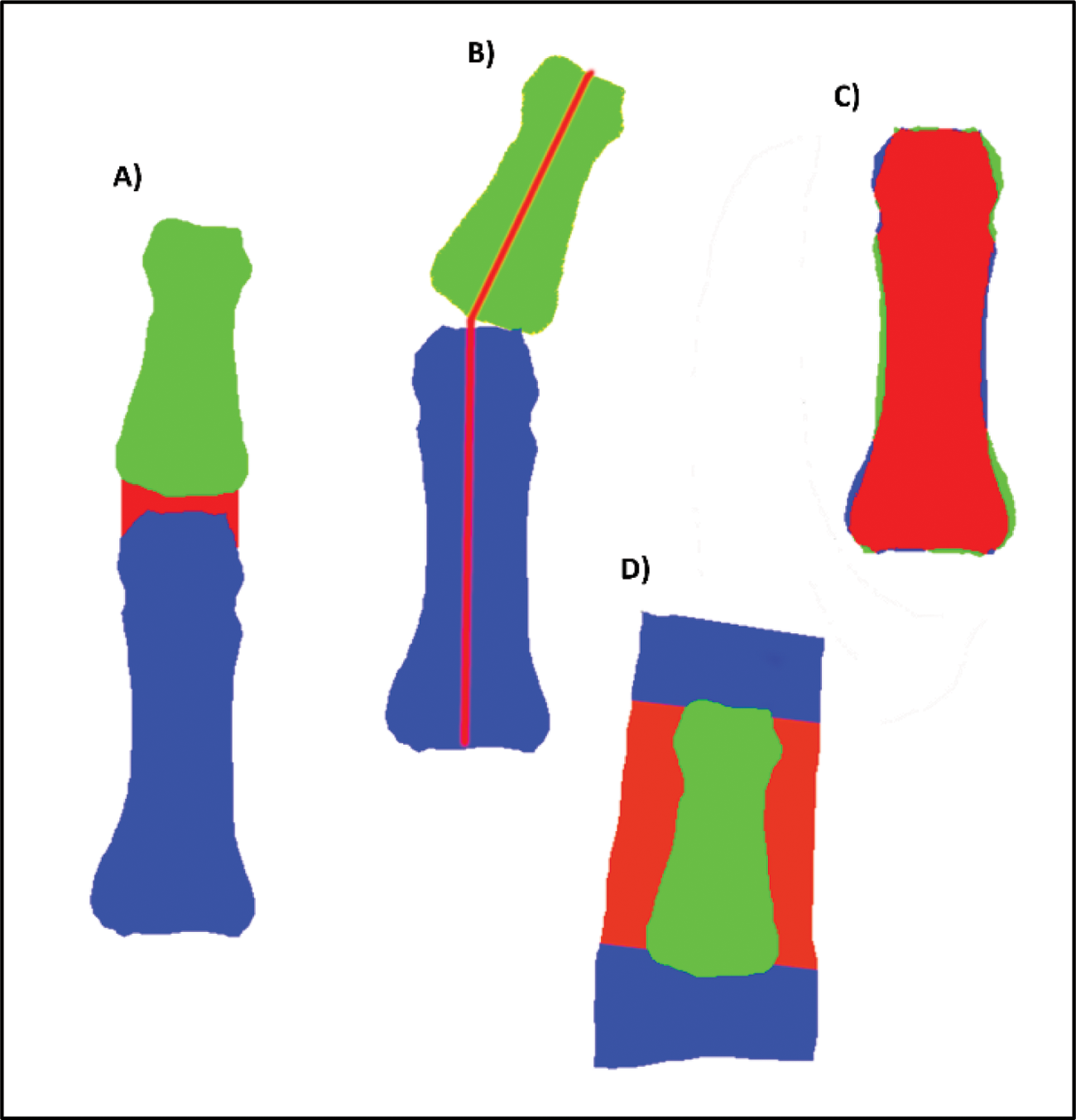

Background: Diagnosis and treatment of psoriatic arthritis (PsA) is often delayed due to a lack of clear diagnostic criteria and limited resources for referral to a rheumatologist, including a high number of inappropriate referrals. Artificial intelligence (AI) and natural language processing (NLP) methods provide algorithms for learning systems to recognize disease-related terms and classify clinical phenotypes using large datasets, which may support early identification of patients with a suspected diagnosis of PsA. In previous work [1], we presented an approach using NLP to identify morning stiffness (MST) as a predictor to discriminate patients with diagnosed PsA and axSpA from controls suspected of having PsA or axSpA. With the same aim, we extended the panel of predictors by combining image features extracted from hand and foot radiographs for the PsA cohort.
Objectives: AI and NLP methods are used to identify patients with typical radiographic features (RGF) of inflammation as potential discriminators that can be automatically recognized to support referral.
Methods: A multicentre observational pilot study recruited patients seen by a rheumatologist with a suspected diagnosis of PsA (n=36; classified PsA n=28 according to CASPAR, No PsA=8) from the referring primary care provider. All clinical examination data and findings were collected and adjudicated by rheumatologists, focusing on criteria for the diagnosis of PsA. Unstructured text from the medical history was used to extract diagnostic features including MST. The information extraction algorithms used NLP models to detect expert-curated MST keywords (inclusion of the textual context) and use the results as structured data. In addition, X-ray data was automatically extracted, and bone segmentation was performed, followed by the calculation of “diagnostic parameters”. For bone segmentation, features such as joint/bone distance etc. (Figure 1) were selected as diagnostic parameters. In total, 504 features were identified for each hand and reduced to 159 features without critical loss of quality. To finally merge the tabular clinical data set with the image features, different ML model architectures (e. g. logistic regression) were tested and compared via 5-fold cross-validation.
Derivation of the “diagnosis parameter” in the X-ray imaging data of the hands (in red). A) Joint-/bone-distance, B) joint angle, C) smoothness of the bone contour, D) bone-skin-distance.

Results: The combination of RGF and structured data is summarized in Table 1. With the presented approach, we achieved the best results with an F1 score of 0.89 (±0.07) for the automated detection of MST when using image features extracted from non-reduced images in combination with tabular data and logistic regression classifier. A reduced number of features increases the explanatory power.
Table 1. Evaluation of the MST-classification in PsA patients based on the different set of features (X-ray reduced refers to the 159 features, X-ray to the 504 features, and struct. data to the tabular data) and the logistic regression classifier.

Conclusion: The presented combination of tabular clinical data on MST and extracted image features shows promising results for the detection of classified PsA and may in the future assist physicians. A study is planned not only to confirm the results but also to refine the ML models developed and specify disease attributes.
REFERENCES: [1] H. Kratz et al. “Development of an automated algorithm based on methods of artificial intelligence to assist in the prediction of correct referrals of psoriatic arthritis and axial spondyloarthritis by using patient history texts”. In Annals of the Rheumatic Diseases 81.Suppl 1 (2022), pp. 805-805. DOI:
Acknowledgements: This project has received funding from the Innovative Medicines Initiative 2 Joint Undertaking (JU) under grant agreement No 101007757 (HIPPOCRATES). The JU receives support from the European Union’s Horizon 2020 research and innovation program and EFPIA.
Disclosure of Interests: Michaela Köhm Abbvie, Pfizer, Roche, Chugai, UCB, BMS, Amgen, Celgene, MSD, Novartis, Janssen, Lilly, Sanofi, Biogen, Abbvie, Pfizer, UCB, BMS, Celgene, Amgen, Novartis, Janssen, Lilly, MSD, Sanofi, Abbvie, Pfizer, Roche, Chugai, Prophylix, Rallybio, BMS, Novartis, Amgen, Janssen, Lukas Zerweck: None declared, Tim Alexander Bergmann: None declared, Hannah Kratz: None declared, Dario Antweiler: None declared, Sabine Kugler: None declared, Styliani Tsiami: None declared, Maria Polyzou: None declared, Xenofon Baraliakos: None declared, Sarah Ohrndorf: None declared, Anne Barton: None declared, Laura C. Coates: None declared, Stephen R. Pennington: None declared, Oliver FitzGerald: None declared, Frank Behrens Abbvie, Pfizer, Roche, Chugai, UCB, BMS, Amgen, Celgene, MSD, Novartis, Janssen, Lilly, Sanofi, Biogen, Abbvie, Pfizer, UCB, BMS, Celgene, Amgen, Novartis, Janssen, Lilly, MSD, Sanofi, Abbvie, Pfizer, Roche, Chugai, Prophylix, Rallybio, BMS, Novartis, Amgen, Janssen.